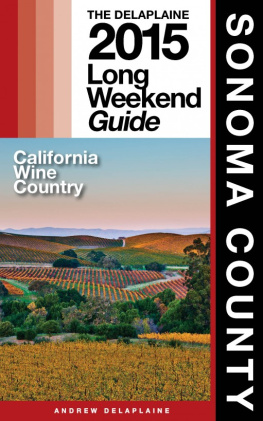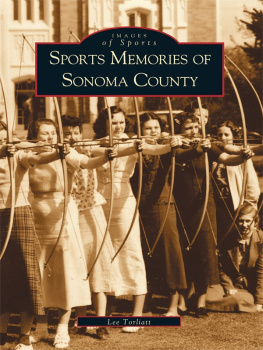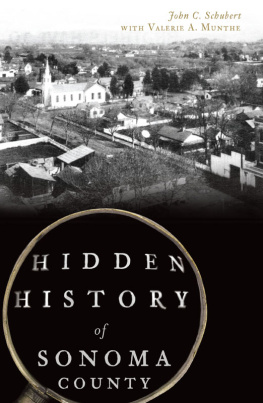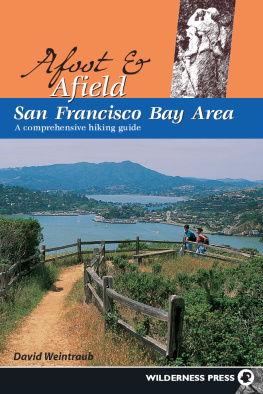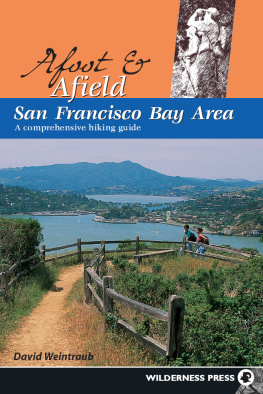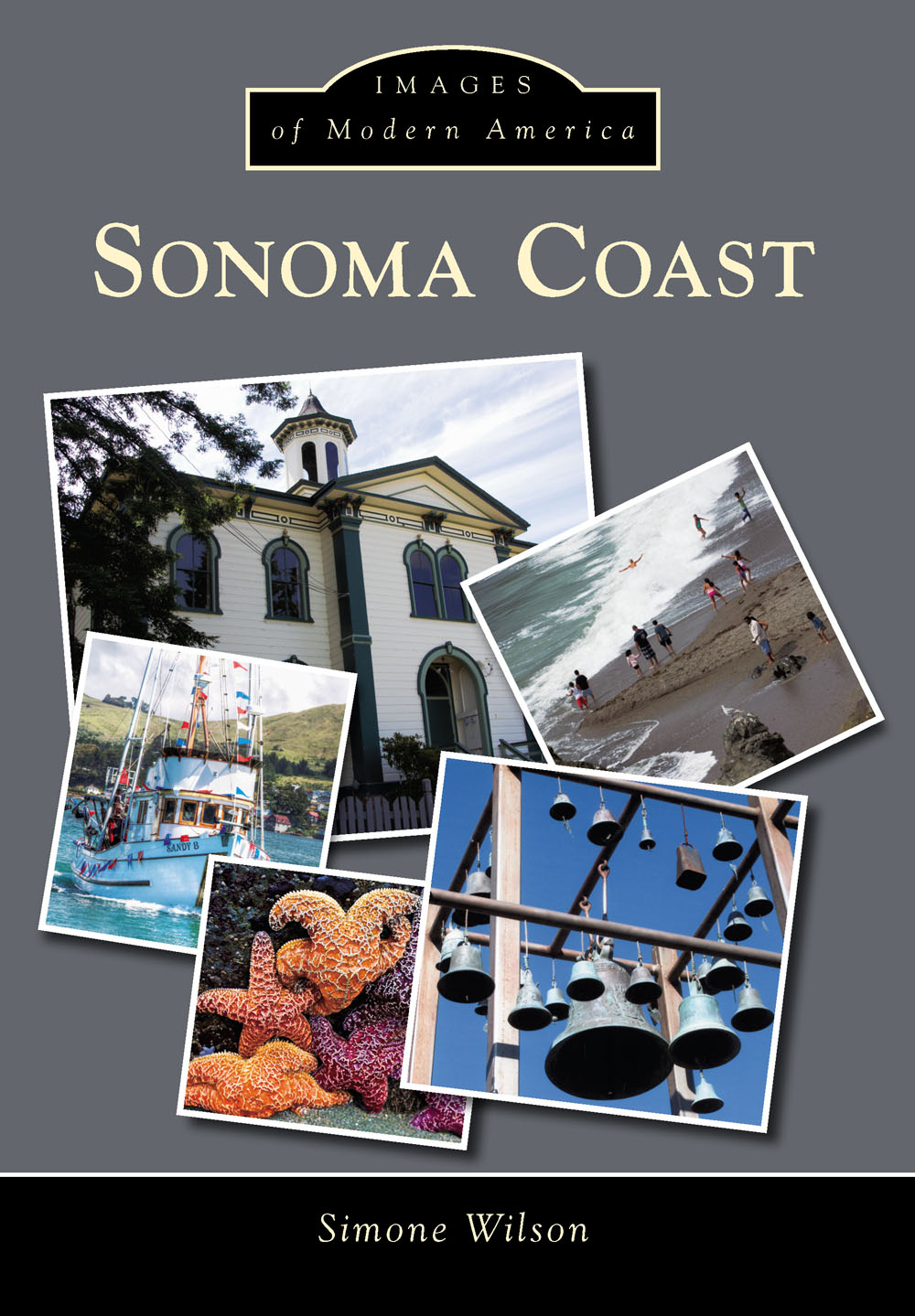
IMAGES
of Modern America
SONOMA COAST

This view north from Bodega Head is typical of the spectacular Sonoma County coastline. With its pristine beaches and rugged coves, the 55-mile Sonoma Coast draws visitors from all over the world. (Photograph by the author.)
ON THE FRONT COVER: Clockwise from top left: Bodegas Potter School (photograph by the author, ).
ON THE BACK COVER: From left to right: Fort Ross defenders fire their muskets (photograph by the author, ).
IMAGES
of Modern America
SONOMA COAST
Simone Wilson

Copyright 2015 by Simone Wilson
ISBN 978-1-4671-3342-5
Ebook ISBN 9781439650851
Published by Arcadia Publishing
Charleston, South Carolina
Library of Congress Control Number: 2014957416
For all general information, please contact Arcadia Publishing:
Telephone 843-853-2070
Fax 843-853-0044
E-mail
For customer service and orders:
Toll-Free 1-888-313-2665
Visit us on the Internet at www.arcadiapublishing.com
Dedicated to Bill Kortum, 19292014:
A champion of coastal access for all Californians and an
inspiration to all who care about the natural world
CONTENTS
ACKNOWLEDGMENTS
This book could not have been compiled without the help of a multitude of generous and knowledgeable people. John Hershey of Bodega Bay loaned his superb photographs to the cover and various chapters, while Gaye LeBaron provided photographs by the late John LeBaron and background information on Bodega Bay. Guerneville photographer Kevin OConnor shared his archive of nature photographs, and Robin Joy Wellman, specialist interpreter for Fort Ross State Historic Park, provided her own photographs along with a selection from the park archives.
Daniel Murley, columnist at the Independent Coast Observer and former Fort Ross park ranger, provided expertise and photographs of the coastal habitat. Michelle Luna, director of Stewards of the Coast and Redwoods, provided photographs and background on Seal Watch and other Stewards programs.
Thanks also to those who nurture and maintain the archives at libraries and historical societies, including Sally Morrison, Gloria Roberts, and Rae Swanson of the Western Sonoma County Historical Society; Tony Hoskins, Katherine Rinehart, and Jo Markwyn at the History Annex of Sonoma County Library; and Eric Stanley, curator of the Sonoma County Museum, for photographs of the Christo Fence and Atomic Park. Others who provided assistance include Bea Brunn, the leader of Whale Watch on Bodega Head; Robin Rudderow, of the Rancho Bodega Historical Society; and the dedicated staff and volunteers at UC Davis Bodega Marine Lab, including Molly Engelbrecht, Kitty Brown, and Barbara Shubin. Thanks also to Coastwalk, including director Una J.M. Glass, Hannah Faire-Scott, and the many participants who added to its photograph archivesincluding Maree Fink, Toni Cannizzaro, Richard Nichols, and Bill Ring.
Thanks to geologist Rolfe Erickson, for a guided tour of the Mammoth Rocks; to Diana Bundy, manager of the Bodega Bay Farmers Market; and to Annie Murphy Springer, for background on the town of Bodega.
Thanks also to the late Bob Madrone, ranger with Sonoma County Regional Parks, who led my first hike on the Sonoma Coast in 1984. Thanks to Lenny Weinstein for organizing Highway One16 as a state scenic highway from Sebastopol to the coast. And profound thanks to the coastal residents who work every day to keep their home a unique and vibrant place and to the organizations that have dedicated time and energy to sharing that place with the rest of California, including COAAST (Citizens Organized to Acquire Access to State Tidelands), Coastwalk, Stewards of the Coast and Redwoods, the Sonoma Land Trust, the Coastal Conservancy, the Fort Ross Conservancy, the Fort Ross Interpretive Association, and LandPaths.
Finally, many thanks are due to Matt Todd, my editor at Arcadia, for steering me through the protocols of modern publishing. And thanks, of course, to my husband, Creighton Bellcompanion on countless photography expeditions to the coast and throughout our native California.
INTRODUCTION
The Sonoma Coast is a wild and rugged place. Oak woodlands slope down to jagged outcroppings, short coastal streams meander into estuaries, and redwood forest covers the hillsides. Dozens of species of birds nest here or migrate from Arctic habitats for the winter. Brown pelicans glide in lines, and gray whales cruise by twice a year on their way to and from lagoons in Baja California, where their calves are born. Sea lions bark from offshore rocks, and harbor seals slumber in the Russian River estuary.
The first Europeans to settle on the coast were employees of the Russian America Company who came south from Russias holdings in Alaska to start an outpost. They were keen to hunt for furs and had orders to grow food for their colleagues in Alaska, where the growing season was short. At Fort Ross, they created a multiracial enclave comprised of Russian colonists, local Kashia Pomo, and native people from Alaskamostly Aleutian people who were expert hunters. In their baidarka kayaks, they ventured as far as San Francisco and out to the Farallon Islands in search of otter pelts. The local otters were driven nearly to extinction within five years, and the yields from the three Russian farmsone near Willow Creek, one near Bodega, and a third near Gratonwere poor enough that the Russians gave up and left in 1841.
After that, the coastal acreage was ceded to Mexico, which parceled it out as vast ranchos without thinking of the native Kashia Pomo and Coast Miwok who had lived there for more than 5,000 years. Bodega Rancho, German Rancho, and others lasted for a few decades and then fragmented into smaller ranches. Some are still active today, while others were preserved as parks starting in the early 1900s.
Nevertheless, the native peoples remained, with a population of Kashia Pomo near Stewarts Point and Miwok scattered throughout Marin and southern Sonoma Counties. The Smith brothers, part-Miwok descendants of Bodega Rancho owner Stephen Smith, fished at Bodega Bay, and in the early 1900s, they began the commercial fishing industry that would become so crucial to the financial health of the region. During World War II, a jetty was built at the entrance to Bodega Bay, and dredging made it possible to bring larger fishing boats into port.
All of Sonoma Countys coastal towns are unincorporated, so none has a mayor, city council, or official boundaries. Bodega Bay is the largest town, with a population of around 1,100, while Salmon Creek, Jenner, and Timber Cove are home to far fewer. Their commercial districtssometimes a single storeare strung along Highway One between the parks, and with no city government, these communities provide their own servicesfunded by barbecues and special events like the Bodega Bay Fishermens Festival and Bodegas Big Event. Community efforts ensure community control. As an example, the Pole Mountain Lookout remains the only fire lookout in the county, financed through community fundraising and surviving because no government agency can cut its budget. Granges, chambers of commerce, volunteer fire departments, artists co-ops, community gardens, and farmers markets are all homegrown efforts that bind these communities together.
Today two-thirds of the coast is official parkland, administered by either the California State Parks Service or the countys system of regional parks. Visionary businessmen and ranchers saw the importance of preserving land for public use, and in 1934, Sonoma Coast State Beaches became the first of our state parks. It includes much of the shore between Bodega Bay and the Russian River, including popular beaches like Salmon Creek, Portuguese Beach, Schoolhouse Beach, Wrights Beach, and Goat Rock. Today, the park is even more extensive, thanks to the acquisition of inland properties like Red Hillwhich overlooks the mouth of the Russian Riverand portions of the Willow Creek watershed.
Next page

